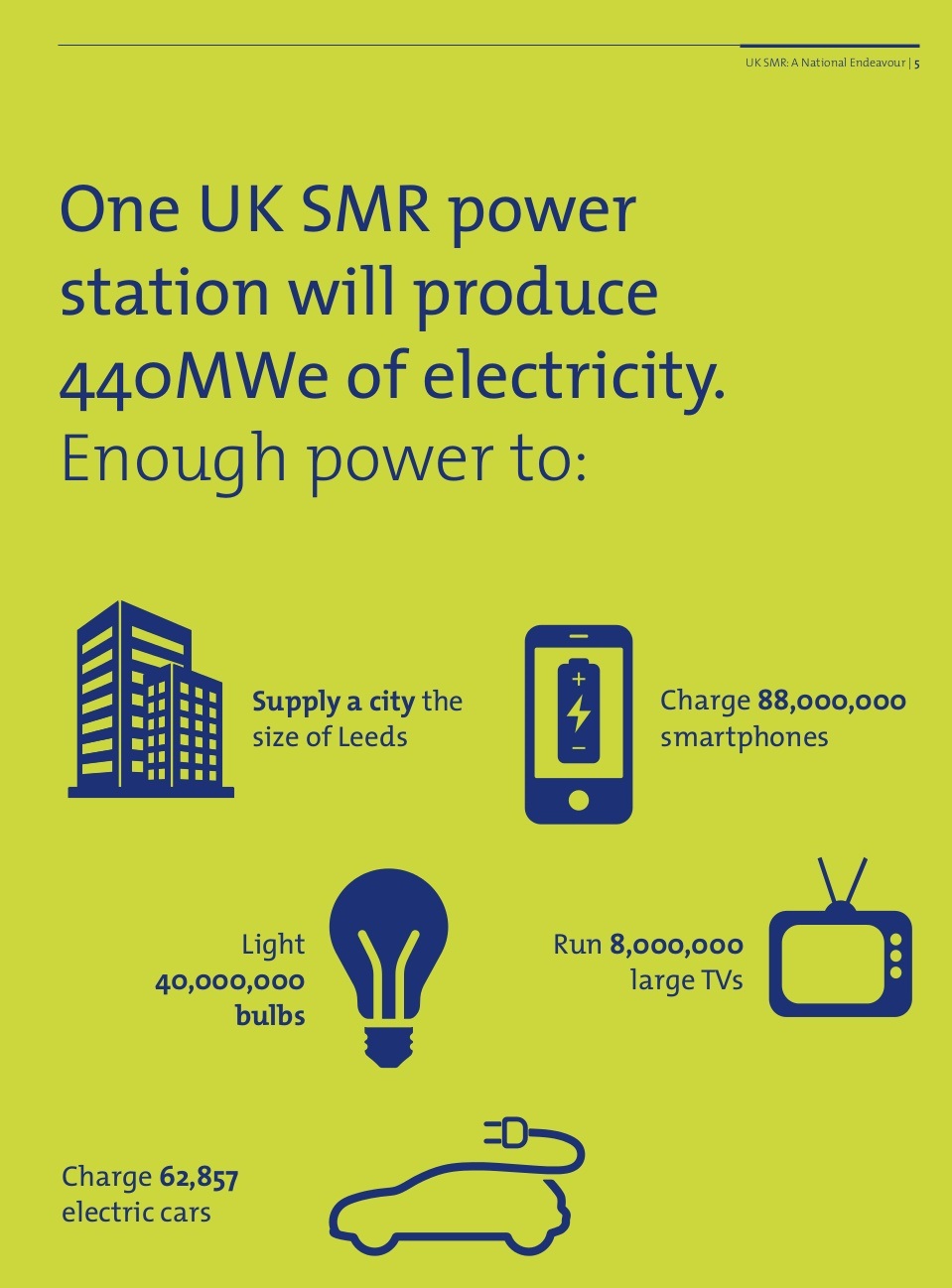Part 2 of 2 Parts (Please read Part 1 first)
The levelized cost of electricity (LCOE) is a number that takes into account the entire cost of energy from a power plant over its expected lifetime including construction, operation, fuel and decommissioning. A recent forecast for electricity from the first U.K. SMR of a particular design is about ninety nine dollars per megawatt hour. By the time that five power reactors of this new design are put into operation, it is thought that the LCOE will drop to about eighty six dollars per megawatt hour. This is significantly lower than the one hundred and twenty two dollars per megawatt hour (in 2013 dollars) that the U.K. government has promised to pay the planned Hinkley C nuclear power plant for thirty five years of power generation. On the other hand, it is significantly more expensive than the current wholesale price of electricity in the U.K. of fifty seven dollars per megawatt hour.
The cost of renewable power in the U.K. is dropping rapidly. Recently, fifteen year contracts were auctioned off for North Sea wind power for seventy six dollars per megawatt hour. Costs for onshore wind power in Germany recently fell to fifty dollars per megawatt hour. The cost of solar PV panels has been dropping rapidly by about fifty percent every five years and will continue to fall. Projecting these falling renewables costs to the year 2030, it is expected that solar power should cost around thirteen dollars per megawatt hour with wind power falling to between twenty seven and forty dollars per megawatt hour.
So if the cost of SMRs will not be cheaper than the cost of big nuclear power reactors and the cost of electricity from big nuclear power reactors cannot compete with the cost of electricity from renewable sources such as wind and solar, why is the U.K. government interested in assisting the development of SMRs? It turns that that investigators have discovered that the U.K. government wants to use civilian nuclear programs to develop expertise and technology for military use, especially the U.K. Trident submarine program. Using the pretence of cheap civilian nuclear power, the government can pour billions of dollars into SMRs without starting a furious debate about military spending.
Lord Hutton himself actually revealed the government intention when he said, “A U.K. SMR program would support all 10 ‘pillars’ of the Government’s Industrial Strategy and assist in sustaining the skills required for the Royal Navy’s submarine program.” Just this month, the defense procurement minister Harriet Baldwin MP answered a question from another member of Parliament by saying, “[i]n all discussions it is fully understood that civil and defense sectors must work together to make sure resource is prioritized appropriately for the protection and prosperity of the United Kingdom.” Unfortunately for the military, some government officials are growing reluctant to continue subsidizing the U.K. Trident program with civilian nuclear projects.
In 2015, the former chancellor of the U.K. announced that a three hundred and thirty million dollar competition for SMR designs would be held and the results announced in the autumn of 2016. However, there were no results to announce in the autumn of 2016. There are reports in the media that the results of the competition will be announced soon. Rolls-Royce and its partners in the SMRC are the winners. It will be interesting to see where the U.K. quest for SMRs goes from here. Frankly, the prospects are not very good.
